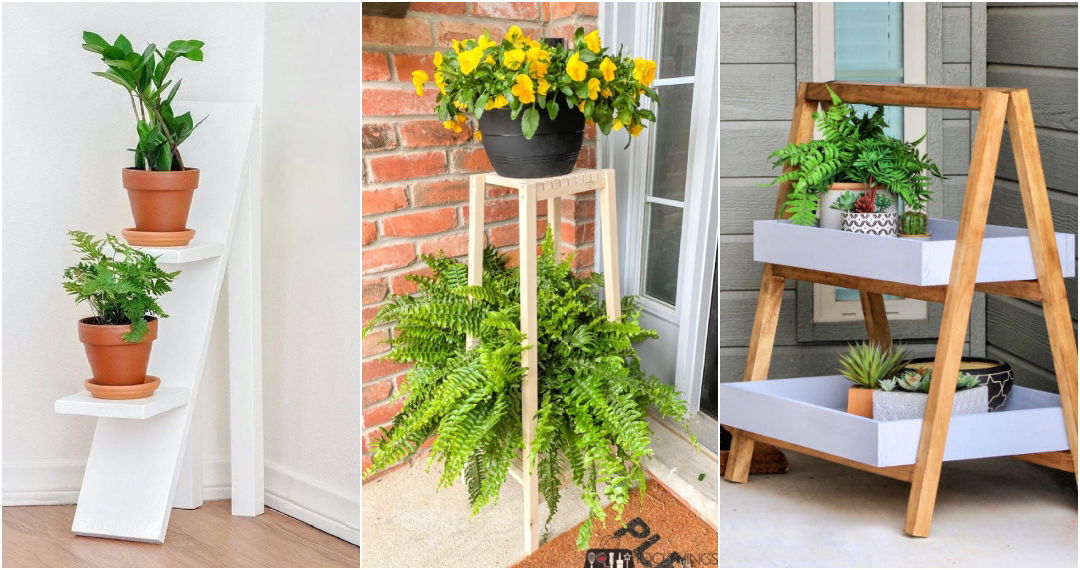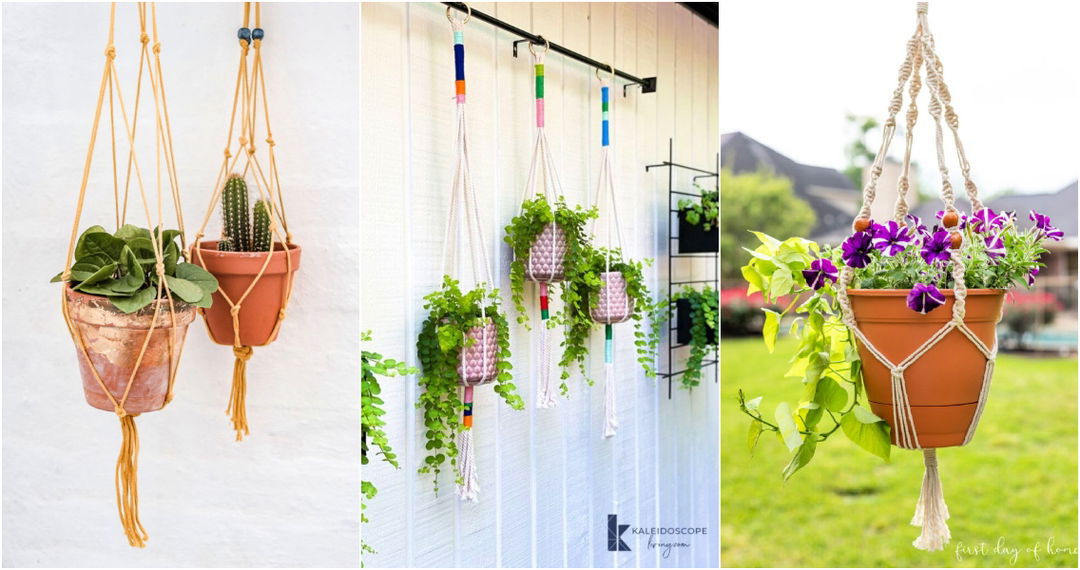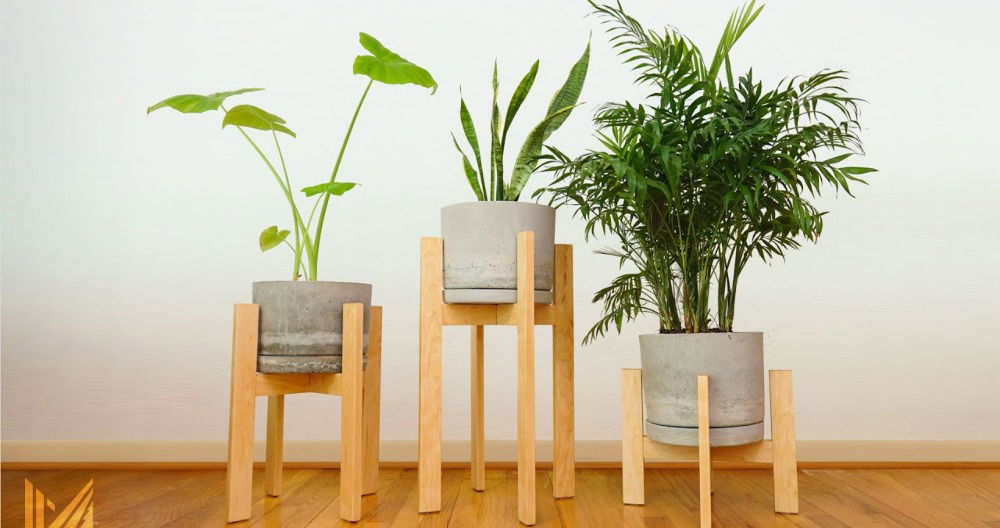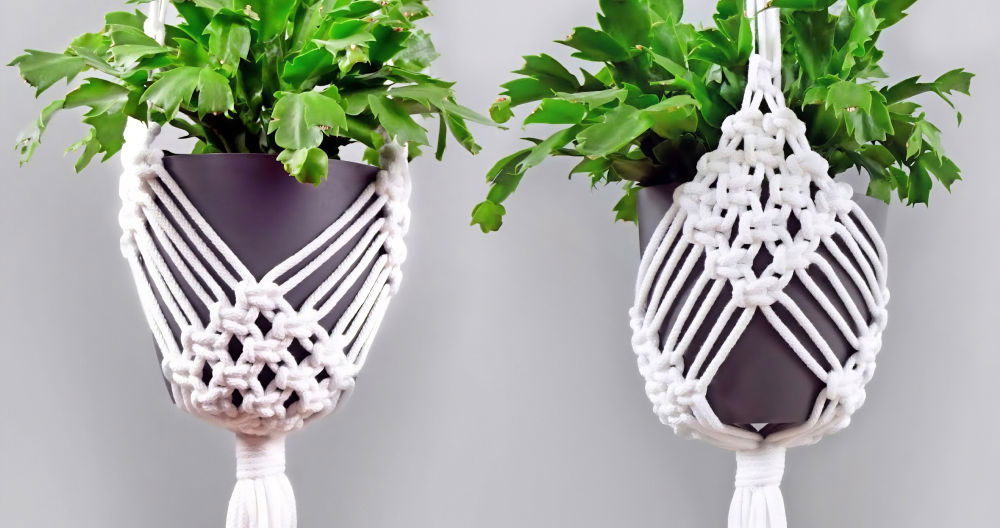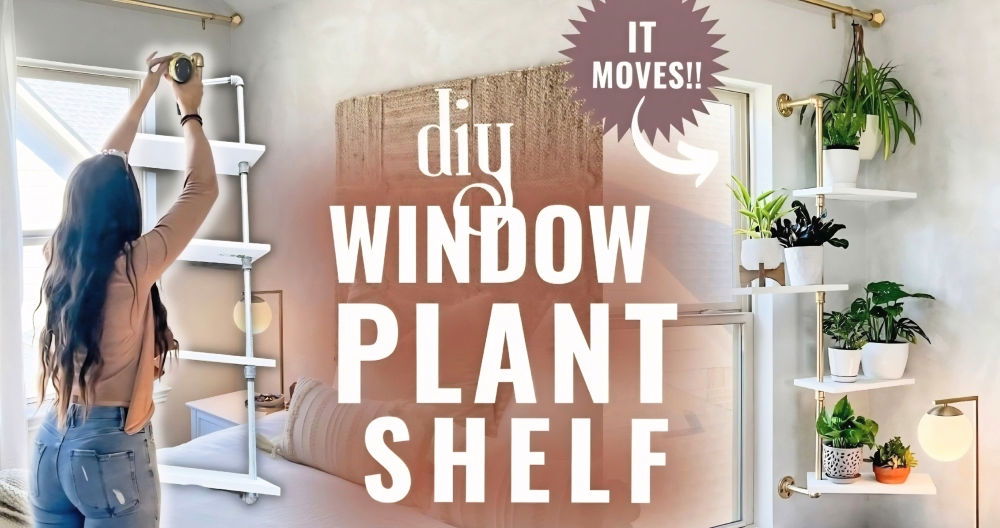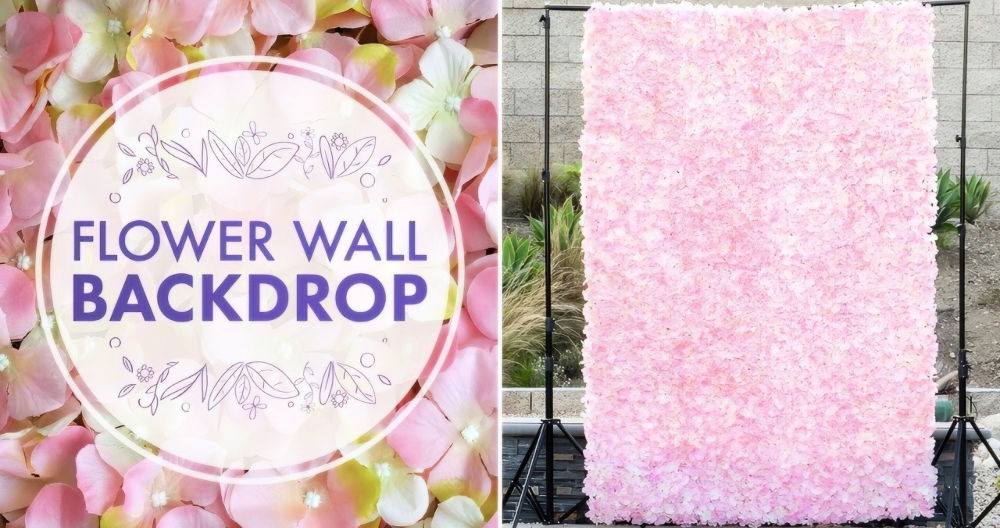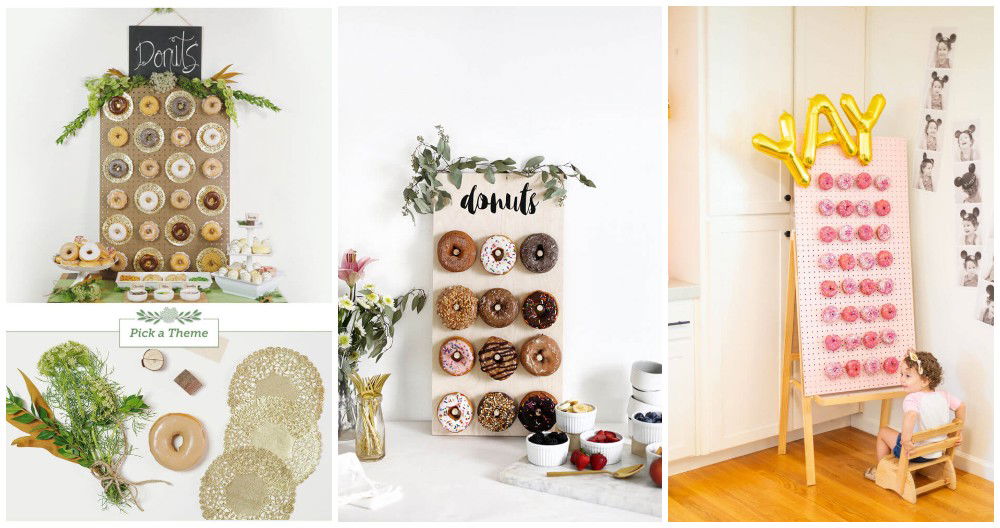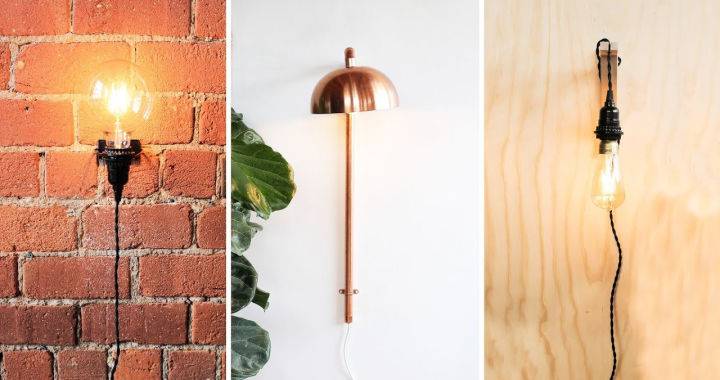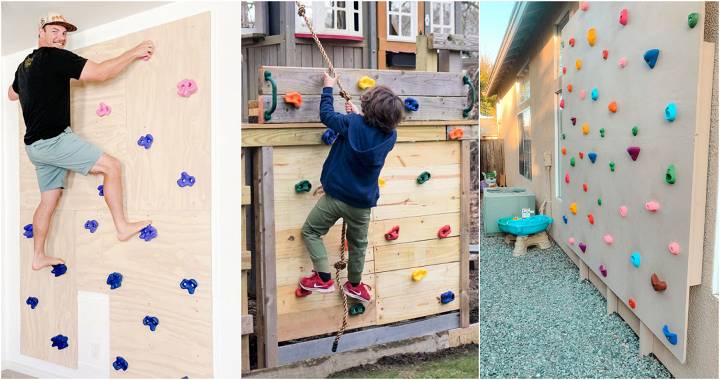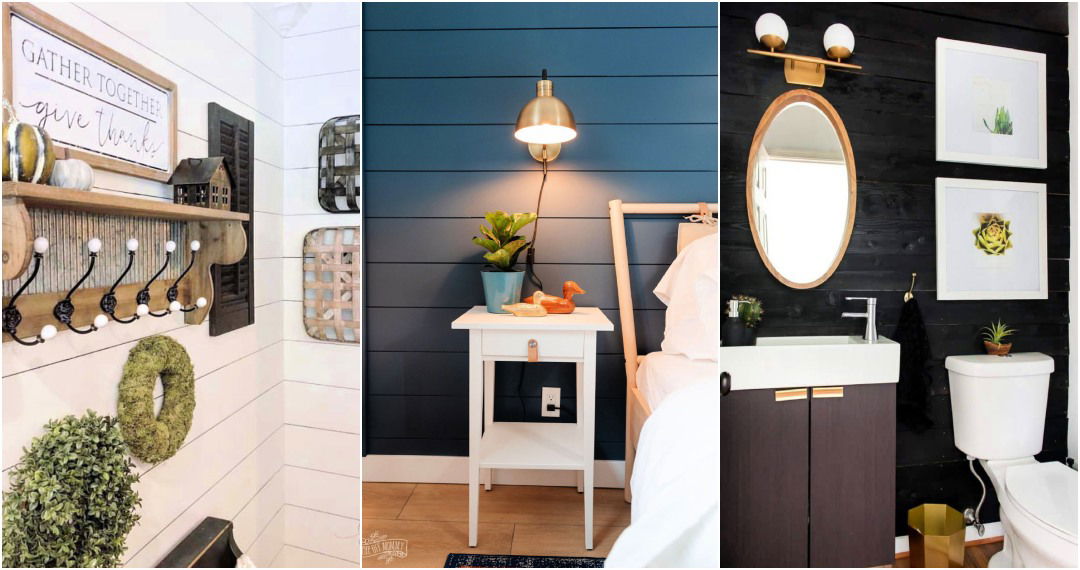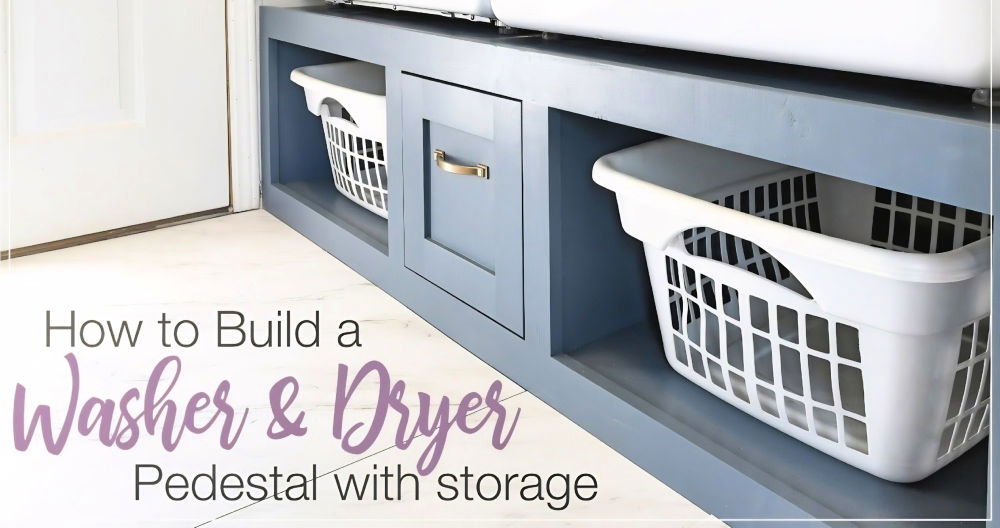Building my DIY plant wall was one of the most enjoyable projects I ever undertook. I started by gathering all the materials like plants, pots, soil, and a sturdy frame. Taking small steps day by day made the work manageable. I carefully planned where every plant would go so they would get the right amount of light. Seeing the progress unfold was truly exciting.
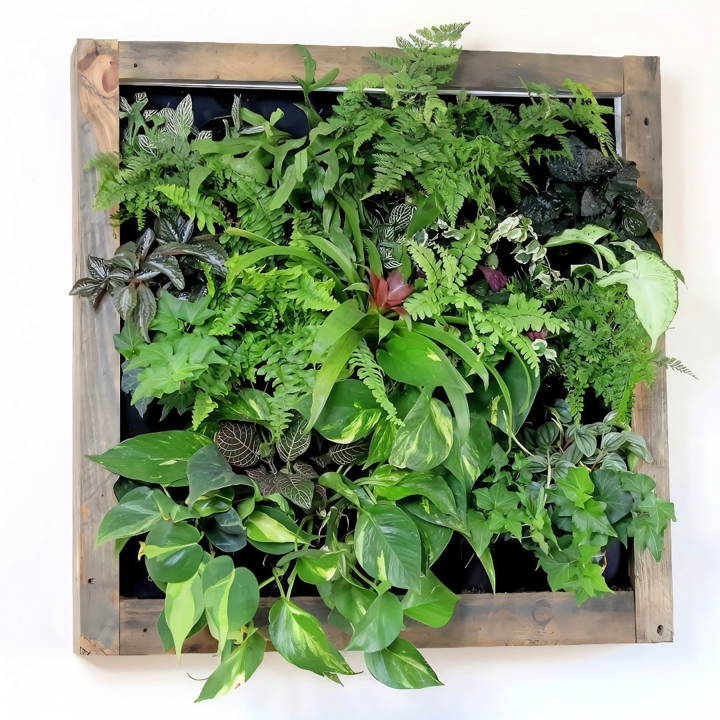
Eventually, it all came together, and my wall was filled with lush green plants. Every time I walked past it, I felt a sense of accomplishment. If you follow easy steps and stay organized, your wall will turn out great, too.
This guide will help you get started and keep you on track. With a bit of effort, your home will have its very own green space.
The Materials: Why Each Is Essential
- PVC Board: Waterproof and sturdy, this serves as the base of your living wall. I picked up a large piece for under $27. A viable, inexpensive option that negates the need for extensive waterproofing measures.
- Fusion Cement & Silicone: I used OD Fusion Cement for its straightforward application to fuse the PVC boards together. Despite aiming for perfect cuts, I acquired GE Silicone 2 as a backup for waterproofing. A tube doesn't set you back much and ensures your living wall doesn't wreak havoc indoors.
- Screws: To hold everything tightly together. I opted for 1.25-inch-long screws that didn't add much to the total cost but significantly enhanced stability.
- Pre-Made Plant Pockets: To reduce hassle and save time, I purchased these from Amazon. Although they needed slight modification, they were a far easier option than DIYing from landscaping fabric.
- Substrate Components (Potting Soil, Orchid Bark, Sphagnum Moss): These three provide an excellent mix for moisture retention and good drainage, crucial for your plants' health.
- Felt Pads and D-Ring Hangers: These protect your wall and ensure the structure can be safely hung, supporting the weight of your living wall.
- Stainless Steel Staples: To attach the plant pockets securely to the PVC structure.
- Plants: The soul of your living wall. I splurged here but remember, the beauty of DIY is the customization. Pick plants that you love and that complement each other in size and care needs.
Step by Step Instructions
Learn how to make a gorgeous DIY plant wall with our step-by-step instructions. Perfect for enhancing home decor and adding greenery to your space.
Building the Structure
I started by cutting the PVC board into the back piece and several strips to build a frame. It was a bit of trial and error, especially ensuring the cuts were precise for the waterproofing to work effectively.
The Assembly Line
Next came piecing everything together. Applying cement where the boards connected and reinforcing them with screws gave me a sturdy, leak-resistant structure. Well, that was the goal. Despite my best efforts, a water test proved I wasn't quite there, so I sealed every seam with silicone. (A good night's sleep later, it held water perfectly!)
The Aesthetic Touch
As functional as PVC is, it's not the prettiest. I decided to cover the structure in pallet wood, which I got for free, cutting costs but not corners on style. After fitting, drilling, and staining the wood (I already had grey stain, but any similar product wouldn't break the bank), the structure looked ready to blend into any living space with rustic charm.
Planting Process
Learn about the planting process: from choosing the right plants and preparing the substrate to arranging and planting them for optimal growth.
Choosing the Right Plants
Picking the right plants was like choosing the cast for a play; everyone needed to fit their role perfectly. Ferns, pothos, ivies, and a selection of accent plants like the red guzmania bromeliad made the cut. Remember to consider the mature size of the plants and their care needs.
Preparing the Substrate
I mixed two different substrates, adjusting the ratio of ingredients depending on the specific needs of the plants to ensure they would thrive.
Arranging and Planting
With no strict plan in place but a clear vision in my mind, I started planting, keeping the aesthetic and practical aspects in mind. The goal was to cover as much of the fabric as possible from the get-go, knowing the plants would also grow and fill in over time.
The Cost Breakdown
The total cost surprised me a bit, tallying up to around $267.89, including plants. It was a splurge, particularly on the greenery, but considering the price point of pre-made living walls, I found immense value in the personalization and satisfaction of DIY.
The Final Product
Hanging the completed plant wall was the moment of truth. I anchored it securely (stud finders and drywall anchors are your friends here), stepped back, and admired my handiwork. It was more than a decor addition; it was a piece of living art that I had buildd.
Design Variations for Your DIY Plant Wall
When it comes to making a DIY plant wall, the design possibilities are as diverse as the plants you can choose. Here's a guide to help you explore various design options that can fit any space and style.
Vertical Garden Panels
Vertical garden panels are a great way to add greenery to your space without taking up too much room. You can use a variety of materials like wooden planks, metal grids, or recycled plastic to build the panels. Arrange the panels in a pattern that suits your space and attach small pots or planters.
Hanging Pots
If you're short on floor space, consider hanging pots from the ceiling or wall. Use sturdy hooks and durable strings or chains to hang pots at different levels. This cascading effect not only looks beautiful but also allows you to grow a variety of plants.
Pallet Planters
Wooden pallets can be repurposed into charming plant walls. Sand down a pallet, paint it if desired, and secure pots or build slots to tuck in the plants. Pallet planters give a rustic feel and are perfect for herbs and small flowers.
Frame Your Plants
Build framed plant displays by building a box frame and filling it with soil and plants. This can be hung on the wall like a piece of art and is an excellent way to showcase a particular plant or a composition of several species.
Shelf Life
Shelves aren't just for books! Install shelves on your wall and line them with potted plants. This method allows you to easily change the arrangement and mix different plant sizes and pot designs.
Pocket Gardens
Fabric or felt pocket gardens are a soft and lightweight option. They can be hung on any wall and filled with soil and plants. Watering is easy, and they're perfect for making a lush, living tapestry.
Modular Systems
Modular plant wall systems are available that allow you to easily swap out plants. These systems often come with built-in watering solutions and are ideal for making a more formal and structured plant wall.
Upcycled Treasures
Get creative with items you already have. Old gutters, bottles, or even shoes can be turned into unique planters. This approach adds character and tells a story through your plant wall.
The key to a successful DIY plant wall is to choose a design that you love, and that works for your space and lifestyle.
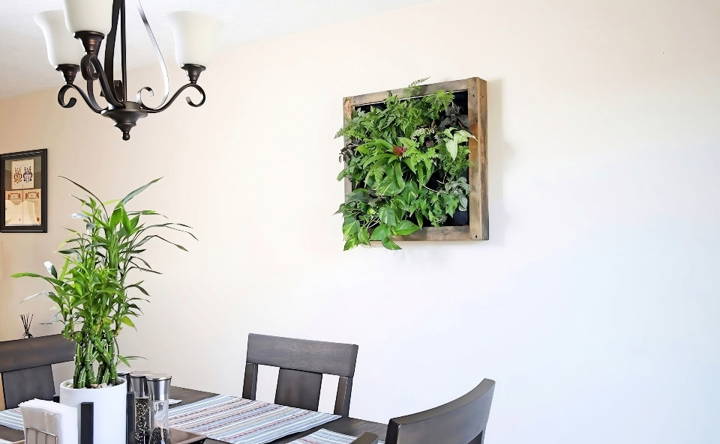
Plant Selection for Your DIY Plant Wall
Choosing the right plants for your DIY plant wall is crucial for its success and longevity. Here's a guide to selecting plants that will thrive in a vertical garden setting and bring life to your space.
Go for Hardy Varieties
Hardy plants like pothos, philodendron, dracaena, and anthurium are excellent choices for plant walls. They are resilient and can tolerate a bit of neglect, making them perfect for busy individuals or those new to gardening.
Consider the Light
Before selecting plants, consider the amount of light your plant wall will receive. If it's in a low-light area, opt for shade-loving plants. For brighter spots, choose plants that enjoy more sun.
Think About Watering Needs
Some plants require more water than others. Select plants with similar watering needs to make maintenance easier. Succulents and cacti are great for drier conditions, while ferns and mosses prefer more moisture.
Add Variety for Visual Interest
Mix and match different plant types to build a visually appealing wall. Combine various textures, colors, and growth patterns. For example, pair the broad leaves of a philodendron with the delicate fronds of a fern.
Keep Maintenance in Mind
Choose plants that are easy to care for and maintain. Avoid plants that are prone to dropping leaves or require frequent pruning, as this can build extra work and mess.
Use Local and Seasonal Plants
Incorporating local and seasonal plants can make your plant wall more sustainable and easier to maintain. These plants are adapted to your climate and will likely thrive with minimal intervention.
Safety First
If you have pets or small children, make sure to choose plants that are non-toxic and safe for them. Consult a local nursery or do a quick search to ensure the plants you select won't pose any health risks.
By carefully selecting plants that fit your lifestyle and environment, you can build a beautiful and thriving DIY plant wall that will bring a touch of nature into your home.
Troubleshooting Guide for Your DIY Plant Wall
Making a DIY plant wall can be a rewarding project, but sometimes you might encounter issues. Here's a straightforward guide to help you troubleshoot common problems and keep your plant wall thriving.
Inadequate Lighting
Plants need light to grow, and not getting enough can cause them to look weak or wilted. If your wall isn't receiving enough natural light, consider using LED grow lights. They're energy-efficient and can provide the necessary spectrum of light for your plants to flourish.
Overwatering or Underwatering
Watering can be tricky with plant walls. Signs of overwatering include yellowing leaves and a musty smell, while underwatering will cause the plants to dry out and leaves to brown. Ensure your wall has a proper irrigation system that distributes water evenly, and adjust your watering schedule according to the needs of your plants.
Nutrient Deficiencies
If your plants are looking a bit lackluster, they might be missing essential nutrients. Use a balanced, water-soluble fertilizer every few weeks to give your plants a boost. Be careful not to over-fertilize, as this can harm the plants.
Pests and Diseases
Keep an eye out for common pests like aphids and spider mites. If you spot any, isolate the affected plants and treat them with an appropriate organic pesticide. For diseases, remove any diseased foliage and improve air circulation around your plants.
Plant Selection
Not all plants are suited for a vertical garden. If some of your plants aren't doing well, they might not be the right fit. Research and choose plants that are known to thrive in vertical spaces.
Structural Issues
Your plant wall needs to be structurally sound to support the weight of the plants, soil, and water. If you notice sagging or instability, reinforce the structure with stronger materials or additional supports.
Drainage Problems
Proper drainage is essential to prevent root rot. If water isn't draining well, check for clogs in the system and consider adding more drainage holes or a layer of pebbles at the bottom of your planters.
By addressing these common issues, you can ensure that your DIY plant wall remains a beautiful and healthy feature in your home..
FAQs About DIY Plant Wall
Discover answers to common questions about DIY plant walls. Learn how to build, maintain, and benefit from a stunning living wall in your home.
A DIY plant wall is a creative way to display plants vertically in your home. It’s a space-saving solution that can add a touch of nature to any room. You can use various materials like pallets, shelves, or trellises to create your plant wall.
Water your plants regularly, checking the soil moisture weekly. Be cautious of overwatering to prevent root rot. Prune dead leaves and fertilize as needed to keep your plants healthy. If you’re using a felt system, ensure it’s securely attached and the water distribution is even.
Absolutely! A plant wall is perfect for small spaces. You can hang a series of pots in a window or use a vertical planter. Choose plants that thrive in your wall’s lighting conditions and consider self-watering pots for ease of maintenance.
Selecting the right plants for your wall is crucial. Opt for species that thrive in your climate and the lighting conditions of the wall's location. Succulents, ferns, and air plants are popular choices due to their low maintenance and adaptability. For a lush look, consider trailing plants like pothos or philodendron.
Get creative with your plant wall by mixing and matching different plant types and planter styles. You can build patterns with the foliage, use colorful pots for a vibrant effect, or incorporate a theme like a tropical paradise or a desert oasis. For a unique touch, add elements like moss or integrate a water feature for a dynamic display.
Reflection
Encouraging you to start your DIY plant wall project will greatly enhance your living space. Simple steps, clear guidance, and a touch of creativity will lead you to success.



